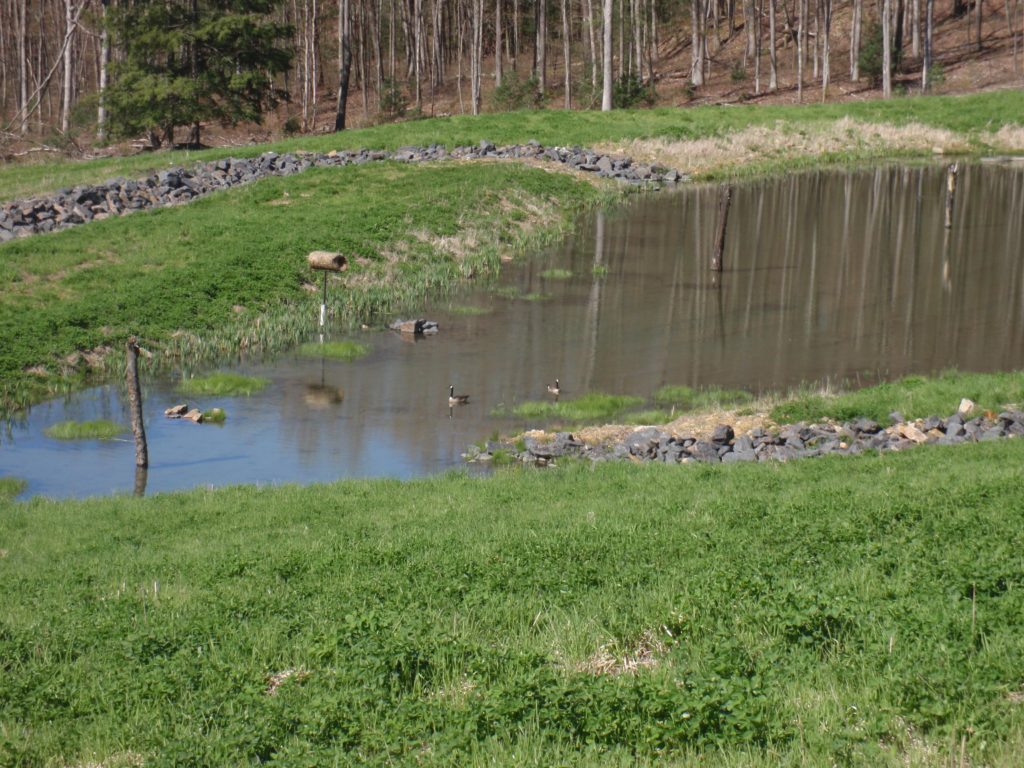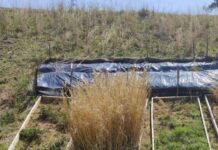Intentional Reclamation Efforts Improve Environment
By Hal Lunsford, MPA; Stefano Rignanese, MS; Michael C. Korb, PE
What do mine reclamation and butterfly gardens have in common? More importantly, how do they link to erosion and sediment control?
What is mine reclamation? According to the California Department of Conservation, it is “The combined process by which adverse environmental effects of surface mining are minimized and mined lands are returned to a beneficial end use.”1
What are butterfly gardens or habitats? According to the Lady Bird Johnson Wildflower Center, a butterfly garden is a “Plant environment designed as an outdoor haven and natural habitat for butterflies, specifically created to nourish and protect with a wide variety of plants native to their region.”2
The large and brilliantly-colored monarch butterfly is among the most easily recognizable of the butterfly species that call North America home but the population has declined by approximately 90% since the 1990s.3 Habitat loss due to intensive agriculture, urban development, use of pesticides and weather pattern changes have contributed to the decline.

Monarchs ranged throughout North and South America up to a few years ago, but they are no longer found in South America. The monarch is also found in Australia, New Zealand, Hawaii, and Oceania.
Milkweed is the monarch’s sole food source and the rookery for laying their eggs, food source for their larvae, and later, a bench for their cocoons. Without milkweed, this beautiful species will become extinct as have over 80% of all butterfly species on our small planet.4
Scientists, construction contractors, and citizens must come together to prevent the extinction of one species—the monarch. Erosion and sediment control professionals can play a significant role in the effort, while also meeting the goals of their erosion and sediment control projects.

Michael C. Korb, P.E., a retired manager of the state Bureau of Abandoned Mine Reclamation in Wilkes-Barre, Pennsylvania who now works as senior engineer for Tetra Tech in Dallas, found that milkweed plants and monarchs not only survived, but thrived in his restoration projects that included closed and abandoned strip-mining areas. His efforts not only controlled sediment and erosion, but also improved the aesthetics of these areas to improve the overall community. Hundreds of areas that can benefit from this type of reclamation effort can be found in all states in the U.S. and in countries worldwide.
Another issue related to the demise of the monarch butterfly habitat is along the roads and major highways throughout the U.S. Most departments of transportation use herbicides to kill weeds to create an unnatural monoculture along the roadways. While the beautiful, grassed roadway shoulders and right of ways may look like a golf course, there are benefits to using the areas to provide habitats for native plants and animals including the monarch butterflies and milkweed, which is invasive to grassed areas.
Years ago, First Lady Ladybird Johnson, led an effort to incorporate areas of diverse native plantings along highways and roads. The benefits of native plants in these areas include not only increased habitats for disappearing plants and animals, but also decreased carbon emissions from fuels needed to continually mow shoulders, right of ways, and medians.

Even with a resurgence of interest in butterfly gardens on homeowners’ properties, as part of reclamation projects or along highways, there are some right and wrong ways to approach the plantings.
A common mistake is the use of nonnative species of milkweed that can survive winters.4 This causes this butterfly to remain in place over the year rather than migrate as they have done since the Paleocene Epoch. Although other butterflies can overwinter as larvae, pupae, or even as adults in some species, monarchs cannot survive the cold winters of northern climates. Monarchs in the western U.S. states migrate to Mexico, and monarchs in the eastern states migrate to Florida. Environmental cues, such as availability of milkweed, can prompt migration at the right time or, in the event of nonnative milkweed, cause the butterfly to stay in a location they cannot survive.
The best practice is to use only native species of milkweed or other plants that are specific to an area or state for mine reclamation projects, highway beautification efforts, and local butterfly gardens.
References
1. Mine Reclamation. California Department of Conservation. https://www.conservation.ca.gov/dmr/SMARA%20Mines/reclamation.
2. How to Make a Butterfly Garden. Lady Bird Johnson Wildflower Center. https://www.wildflower.org/learn/how-to/make-a-butterfly-garden.
3. Monarch Butterfly. National Wildlife Federation. https://www.nwf.org/Educational-Resources/Wildlife-Guide/Invertebrates/Monarch-Butterfly.
4. National Geographic. https://www.nationalgeographic.com/animals/invertebrates/facts/monarch-butterfly.
About the Experts
Hal Lunsford, MPA, is a 40-year veteran environmentalist, and an active member in the U.S. Green Building Council and IECA Southeastern Chapter. He was recently elected to his second term as the only Florida member representative and serves as chairman of the erosion and sediment control track committee for IECA. He holds a bachelor’s degree in earth and atmospheric sciences and a master’s in public administration from the University of West Florida.
Stefano Rignanese, MS, is a civil engineer and has a master of science in civil engineering from Alma Mater Studiorum, University of Bologna, Italy. He joined Maccaferri in 2012 and he is currently the North America technical marketing manager. He was one of the IECA Four Under 40 Young Professional Award in both 2020 and 2021. He currently serves as co-chair of the erosion and sediment control track committee for IECA.
Michael C. “Mike” Korb, PE, graduated as a mining engineer from the University of Missouri—Rolla (now Missouri University of Science and Technology) in January 1968. He is a Society for Mining, Metallurgy & Exploration (SME) Legion of Honor member, a distinguished member of SME, and a two-time past chair and remains active in the SME Penn-Anthracite Section. He works part-time with Tetra Tech in Northeastern Pennsylvania and spends most of his time working with anthracite mine heritage and environmental non-profits.













